Thomas Picton: Artists commissioned to examine slave owner's legacy
- Published
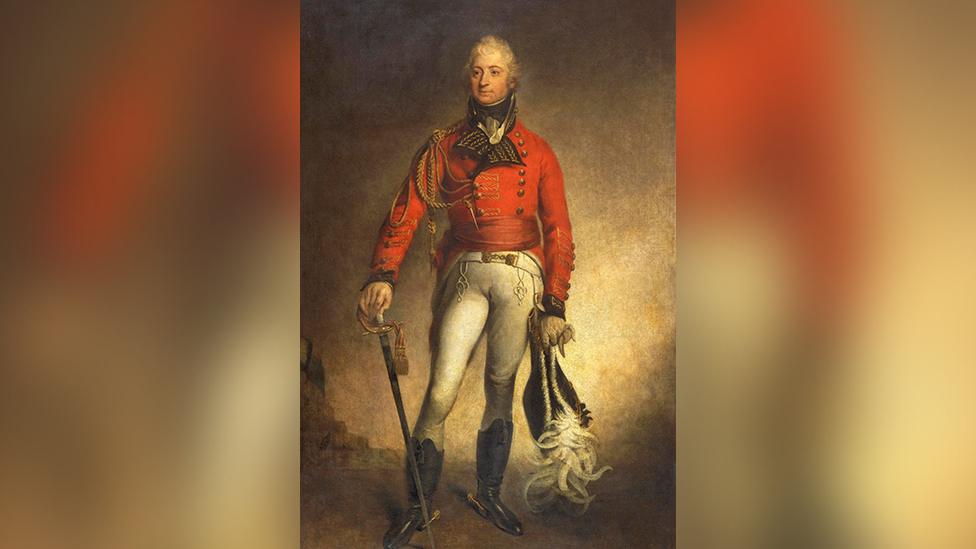
Sir Martin Archer Shee's portrait of Thomas Picton has been a part of the museum's collection since 1907
Two new artist commissions by the National Museum in Cardiff will re-examine the legacy of Sir Thomas Picton.
The 19th Century slave owner had previously been hailed as a hero of the Battle of Waterloo.
The museum hopes the new works will give a platform to voices originally left out of telling Picton's story.
Sir Martin Archer Shee's portrait of him has been a part of the museum's collection since 1907.
The commissions have been awarded to artist Gesiye, and collective Laku Neg.
As governor of Trinidad, Haverfordwest-born Picton abused slaves he owned, and was considered a tyrant even then.
A British general in the Napoleonic wars, he died of a gunshot wound to the head in 1815 at the Battle of Waterloo.
The new works are part of the Reframing Picton project being undertaken by the museum and the Sub Sahara Advisory Panel.
The planned new works will examine colonial representations that existed in the National Museum's galleries and look at black experiences.
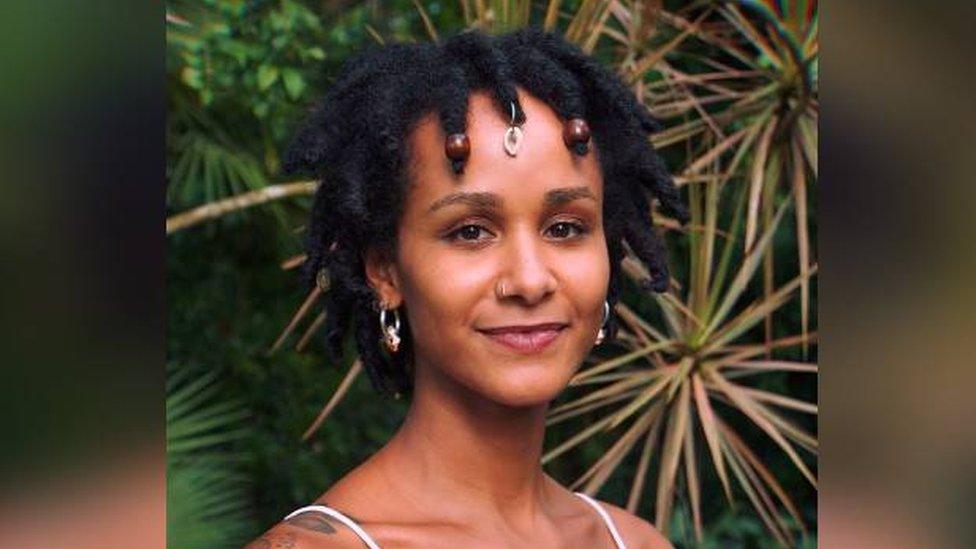
Gesiye's work will involve tattooing people
Gesiye, from Trinidad and Tobago, said: "I envision this piece as a ritual, a healing opportunity for black Trinidadians to reconnect to self, to this island and to each other.
"This work is not an attempt to rewrite history, it is a disruption of the narrative that is so often held up as a singular truth."
Her work will involve tattooing people.
Photos and videos of those will then be exhibited in the museum.
Laku Neg, which means Black Yard in Creole, is made up of people of Trinidadian heritage, who live and work in the UK.
Their piece will be an installation that will include music and sculpture.
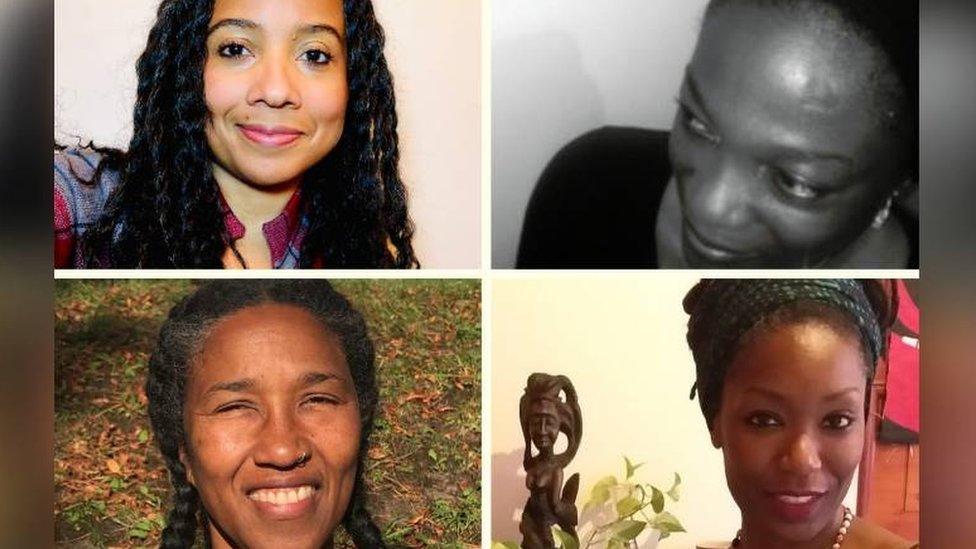
Laku Neg will create an installation that will feature music and sculpture
It will be about two victims of Picton's regime in Trinidad, a pair of girls named Louisa and Present.
Laku Neg said they intend to offer an "ancestral work" that will offer a "360 degree view of Welsh history".
"We aim to create an immersive installation, illuminating a story that did not make it across the Atlantic intact," they said in a statement.
"In representing the Caribbean and its connection with colonial powers, we hope to prompt searching conversations about power, heroism and truth."
The museum's collections and research director, Dr Kath Davies, said she was looking forward to seeing the works displayed.
"We hope that it generates conversation about how we share the different perspectives and histories of Wales in a modern-day museum," she said.
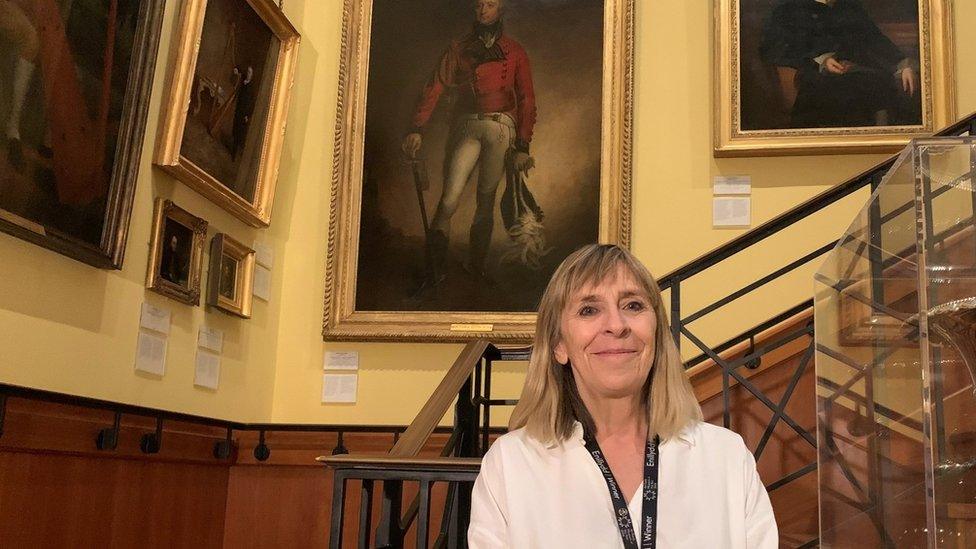
The museum's Dr Kath Davies, is looking forward to seeing the works displayed
Fadhili Maghiya, director of the Sub-Sahara Advisory Panel, was called on by the museum in 2020 to examine the future of the Picton portrait.
"The deeper you look into history, any kind of history, the more facets of truth are revealed," he said.
"And it is important who does the looking, because we all come with lived and learned knowledge that shapes our vision.
"It's no secret that history has rarely been written by people of colour.
"We are now in a time when we are taking ownership of our narrative and stepping from the footnotes of history into the centre."
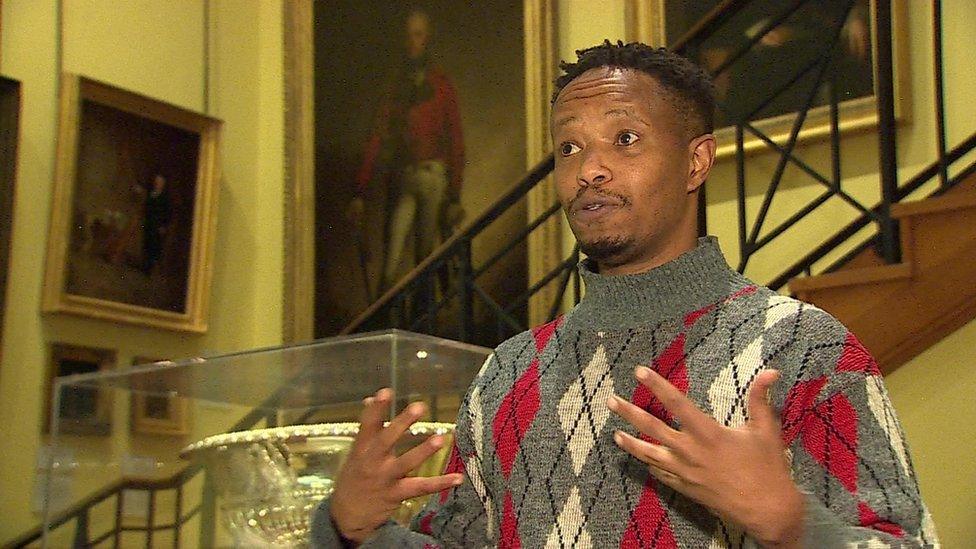
Fadhili Maghiya was called on by the museum to examine the future of the Picton portrait
The commissions follow a callout to artists by the National Museum in January 2021.
More than 50 responses were received, with the majority of artists having a direct link to Trinidad.

2021 BAFTA CYMRU NOMINATED: Watch the cream of the crop
ARTS AND HERITAGE: Lose yourself in Welsh creativity and culture

Related topics
- Published25 October 2020
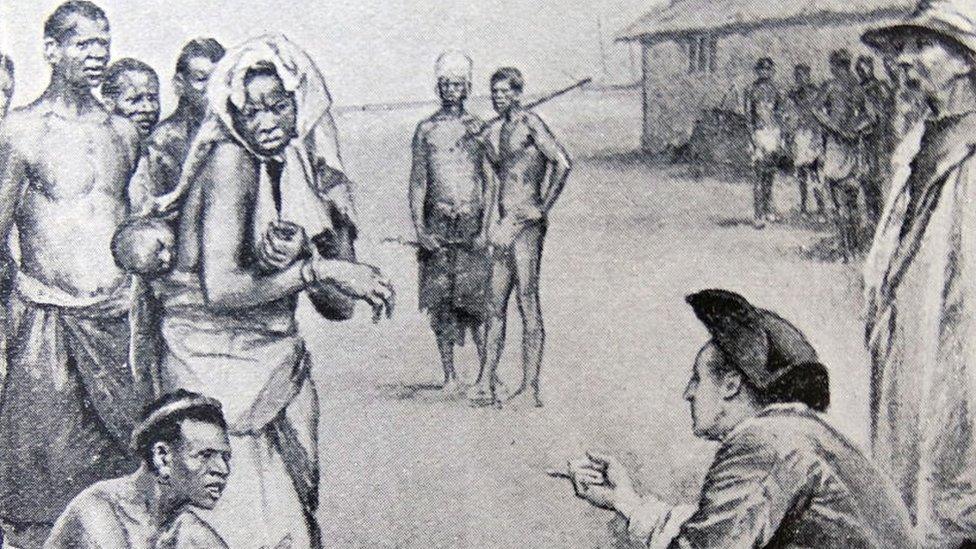
- Published18 June 2015
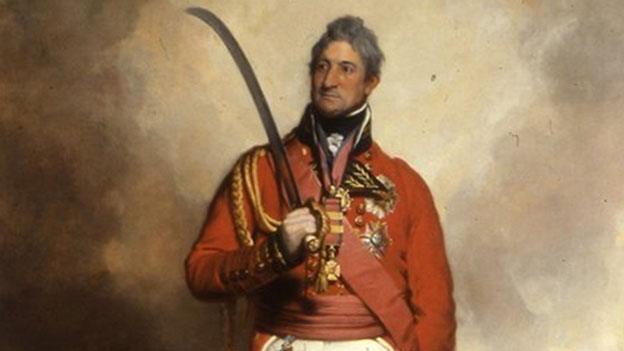
- Published24 July 2020
